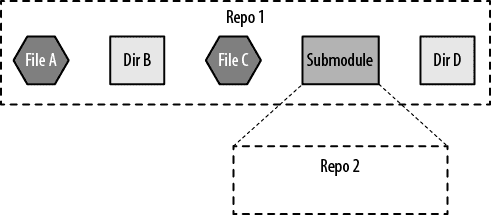Git sub-modules: I finally see the power
Published on May 30, 2020
As I noted in my last post, I'm still a n00b developer. So that's my defense in not knowing about Git sub-modules, which have been around for years.
What's a Git submodule?
Essentially, as I understand it so far, Git sub-modules are linked external repos. So that allows me to add someone else's code repository in my own, but with a catch: Their repo is linked from my repo.
So what makes them powerful?
When I took my first year of Java classes in 2018, I remember using external packages, such as Apache Commons, for my code to gain additional functionality without my needing to write the code for it.
Instead of writing code to caclulate complex numbers, I could just import org.apache.commons.math3.complex and use the contstuctors and methods already written for complex numbers.
I recall having doing a two step process:
- Download the Apache Commons library into my Java project.
- Enable it with an import statement at the top of my code.
I view Git sub-modules in roughly the same way, only there's nothing for me to download. Instead, I run a "git submodule add" command followed by the URL of the repo that has code I want to use in my repo.
I used a submodule this blog theme
My eyes opened to this functionality when creating this site because I wanted to use a customizable design theme but I didn't want to build it myself. So I found the one I wanted on GitHub and added its repo via a submodule into mine.
Remember, all of the data on this site is actually stored in a Github repo, which is accessed by Netlify; each time the repo changes, Netlify sees the change and uses Hugo to create static page files, which are then served up by Netlify. There's no PHP, no database and no webserver for me to deal with.
As I continue to read more about sub-modules, I see that not everyone loves them.
It seems there are potential pitfalls such as external repos getting updated and my repo not knowing about the changes. Or after an update, a change from the external repo could break something in my repo. I'll have to keep digging.
Indeed, there's a good article from Andrew Hoog about using themes with Github submodules that I'll have to go over with a fine tooth comb to see what those are and how best to deal with my theme as a submodule.
So far, however, using a Git submodule made it super simple to add theme functionality to my site. And I can see the potential power of adding external libraries of code with them.
Now I just need to finish my theme customizations: So much to code, so little time!
If you like it, share it!


